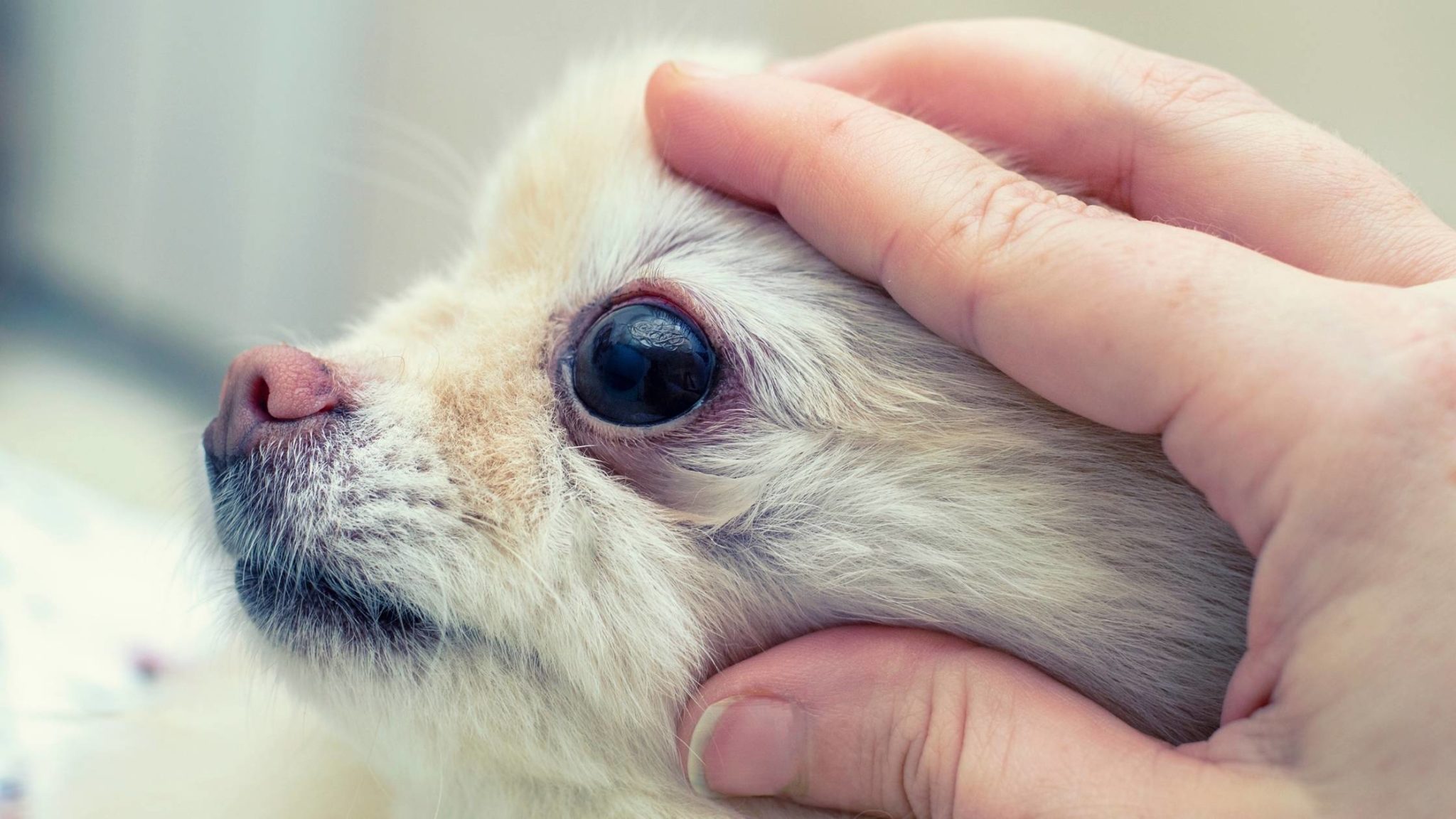Table Of Content

In this case, hair loss is a result of your dog frequently itching their face, whether using their paws or rubbing their face along a carpet or rug. Symptoms of ringworm in dogs include circular areas of hair loss, often with a red and crusty edge, broken hair, and a poor hair coat. Blepharitis will usually improve within a few days of starting the right therapy. Most clinical signs will be controlled completely after two weeks of treatment. Autoimmune and allergy-related forms of blepharitis may require long-term therapy or symptoms will return. If your vet suspects the cause is related to an autoimmune disease, they might do a biopsy of the eyelid tissue.
The Cone of Shame makes pets miserable - University of Sydney
The Cone of Shame makes pets miserable.
Posted: Fri, 13 Mar 2020 07:00:00 GMT [source]
Baldness and a Dog’s Age
Excessive facial rubbing can lead to bald spots around the eyes and further damage to the broken tissue. It’s not a disease in itself and symptoms could indicate more severe underlying conditions that will definitely need to be examined by a veterinarian. With over five years of specialized experience as an animal writer, my expertise lies in dog nutrition, health, behavior, grooming, and training.
Can alopecia cause hair loss around a dog’s eyes?
Being a common disorder found in dogs, hair loss can be caused by a skin infection, allergic reactions, parasitical infection, and even stress. This disorder can happen to dogs of any age and breed, and it can result in partial or complete hair loss. In minor cases, it is possible the mange will only be minimized to specific areas. If you see your dog is losing hair around the eyes, it could be due to mane localized to this area. If the dog remains immunocompromised, the mites may proliferate further and cause it to spread.

Can hair loss around a dog’s eyes be a symptom of Cushing’s disease?
It’s better to be safe than sorry when it comes to your beloved pooch, and hair loss often causes discomfort and pain in animals. Puppies can also experience fur loss around their eyes for the same reasons as older dogs. Ringworm, mites and fleas that can cause bacterial infections are the most common reasons why young dogs suffer from hair loss. When you notice hair loss around your dog’s eyes, it is essential to assess the severity and extent of the hair loss.

Contact your vet
It’s been said that ringworm was given its name because the fungal infection often causes hairless rings around a dog’s eyes, and these rings can continue to grow larger. Alopecia, a term that refers to hair loss or baldness, is a common issue in dogs. It can be caused by various factors, including allergies, infections, parasites, genetics, and underlying medical conditions. Understanding the causes and symptoms of alopecia in dogs is essential for their health and well-being. Some breeds of dog suffer from tear overflow, where the moisture around the eye area could cause bacterial skin infections or a highly contagious fungal infection and even hair loss. It’s possible that a foreign object has found its way into your dog’s eye, causing excessive scratching that can lead to bald spots around the eye area.
Types of Alopecia in Dogs
Don’t even bother checking your dog’s skin because these parasites are microscopic. Commonly, it’s natural for dogs to have a few mites on their skin, but it shouldn’t affect them much when they are healthy or when their immune system is not compromised. Hair loss due to chemotherapy normally clears when chemotherapy sessions are completed. Hair loss may be permanent when caused by genetics, scarring, callouses or pressure sores.
Possible Causes of Hair Loss Around Eyes
Dog Lice: What They Are, How to Avoid Them – American Kennel Club - American Kennel Club
Dog Lice: What They Are, How to Avoid Them – American Kennel Club.
Posted: Wed, 24 Jun 2020 07:00:00 GMT [source]
Allergies in dogs can be treated with daily antihistamines, oral or injectable allergy medications, elimination of the irritant, or with the use of steroids during flare ups. Because there are a few potential causes of your dog’s fur loss, their treatment will vary based on what is diagnosed. Eye injuries can lead to fur loss around the eyes in some canine companions. If your dog is experiencing itching around their eyes or muzzle for any reason, this can cause them to scratch the area to the point of breaking their skin. Skin infections develop when bacteria is introduced to compromised skin, often due to a dog’s scratching. Some dogs will also require antibiotics if a secondary skin infection has developed.
Viral, bacterial or fungal infections
These are often the first signs that something is amiss, potentially indicating an allergy, infection, or another underlying condition. Cushing’s Disease, also known as hyperadrenocorticism, is a condition that affects dogs and is caused by the overproduction of cortisol hormone. This hormone is responsible for the body’s response to stress, maintaining blood sugar levels, and fighting infections. Cushing’s Disease can be caused by a benign or malignant tumor in the pituitary gland, located at the base of the brain, or on the adrenal glands, located above the kidneys. It can also be caused by the prolonged use of steroids, known as iatrogenic Cushing’s syndrome. Just like us, our furry friends can catch pink eye, leading to a not-so-pretty sight of goopy, watery eyes.
Other Causes of Bald Spots in Dogs
Their sharp bites and saliva can cause allergic reactions and irritation in dogs. These annoying skin irritation and allergic reactions may cause the dog to lose hair around his eyes. In 90% of the cases, demodectic mange will go away on its own, provided that your dog is healthy and has a strong immune system. However, if your canine companion has a serious case of demodectic mange, then we highly recommend that you bring him or her to see a vet.
These can result in various skin disorders of the dog, including canine sarcoptic mange. Other eye problems which can affect a dog include cherry eye, corneal ulcers, glaucoma, cataracts and even tumors of the various parts of the eye. The dog may not even be aware of some of them until they cause vision loss. In particular, conjunctivitis in dogs causes itching and even purulent discharge.
There are several types of treatments that can help with seasonal allergies such as allergy shots or antihistamines. To prevent a lot of these issues that can occur due to malnutrition, a healthy diet can definitely help. Balding in humans is mostly linked to age when hair follicles shrink or even die, causing the hair to fall out. The 100% biodegradable and cruelty-free shampoo is specifically designed for dogs with sensitive skin and coat. Sometimes you’ll find flea droppings, which look like tiny pepper-like pieces which confirm that there were fleas or ticks present. It’s only when your furry family members have a weak immune system that they have a higher chance of having this parasitic skin disease.
It can also be caused by autoimmune diseases, where the body’s immune system mistakenly attacks the eyelid tissue. As you might have noticed earlier, the factors that cause hair loss around the eyes have similar symptoms, which can be hard to differentiate. If you can’t figure them out on your own, be sure to contact your vet to prevent further repercussions. Foreign bodies can have a similar effect if they lodge in the dog's skin. These can enter the skin in various ways, but a common issue is when the dog is out in nature. Foliage and other natural material can have sharp points which lodge in the dog's skin as they walk around.
Always follow your veterinarian’s instructions carefully to prevent any unnecessary damage. Pink Eye is also common and contagious to dogs since they tend to be contact-based animals. If they’re uncomfortable or in pain, they’re not going to like being touched in those areas. If he’s suddenly uncomfortable with you scratching or petting in a certain area (particularly his face), this is a problem.
Once your vet has taken a look at the issue, the following steps are normally the ones you can expect. He won’t be able to fight off the infestation like a younger or “stronger” dog would. It most commonly affects the eyes, ears, belly, feet, base of the tail, groin, armpits, and muzzle. It’s important for pet owners to wash their hands before and after touching an infected eye, as some bacteria can also cause pink eye in people too. While this will range based on your dog’s symptoms, there are a few standard go-to’s in terms of diagnostics.
Some medications and even plants could cause rashes and hives to develop, so it’s important to get them treated as soon as you notice them on your pup’s fur or skin. All parasites, including fleas, ticks, mites, lice and worms can cause discomfort and hair loss in dogs if left untreated. Your vet will be able to determine the cause of your dog’s hair loss by looking at the eyes and possibly performing tests for glaucoma and dry eye. We’ll explore the different causes of alopecia in dogs and how you can help your dog if you notice hair loss.

No comments:
Post a Comment